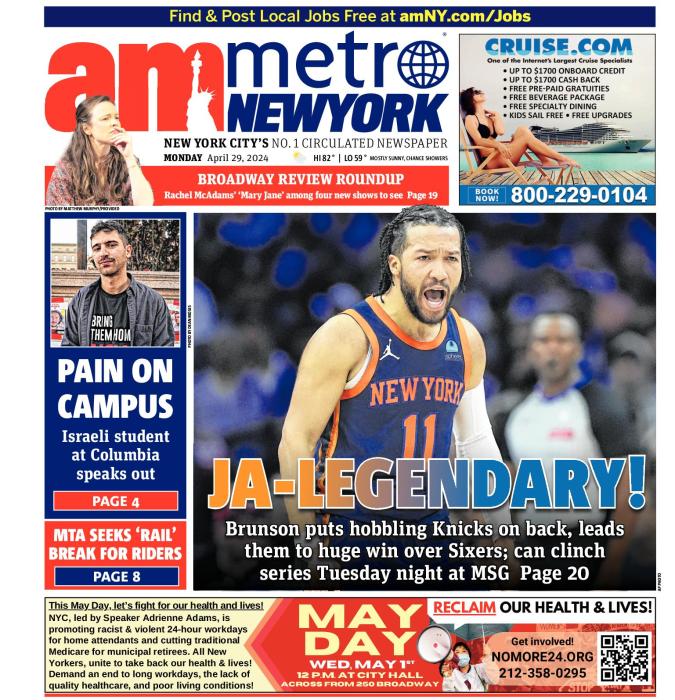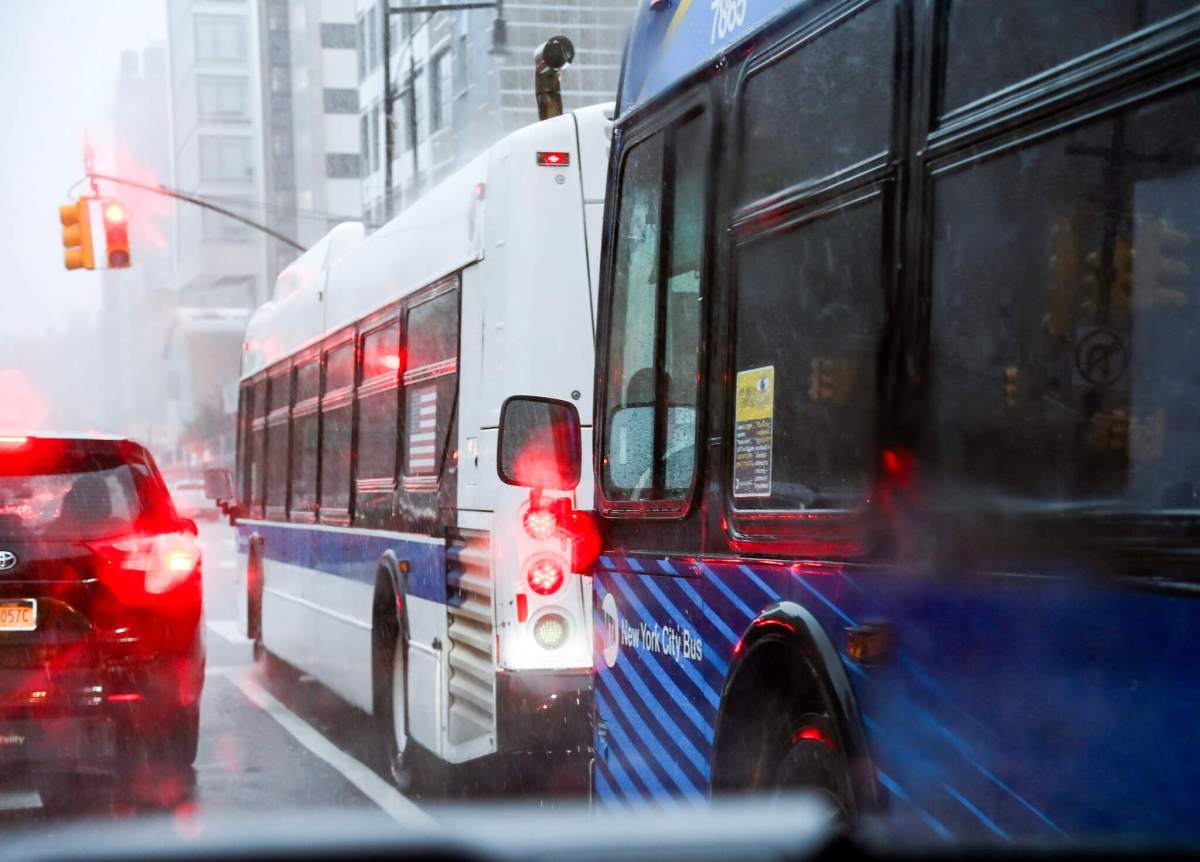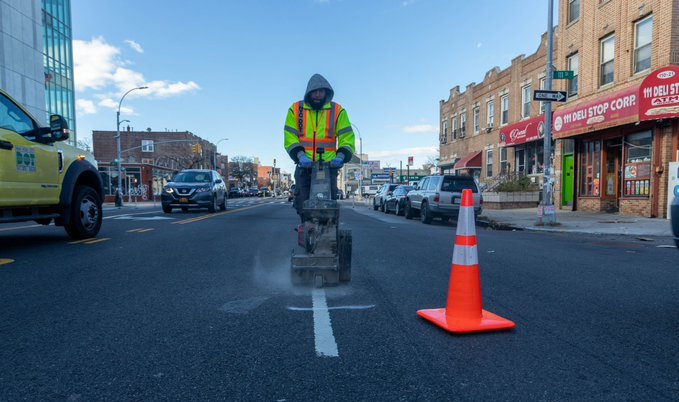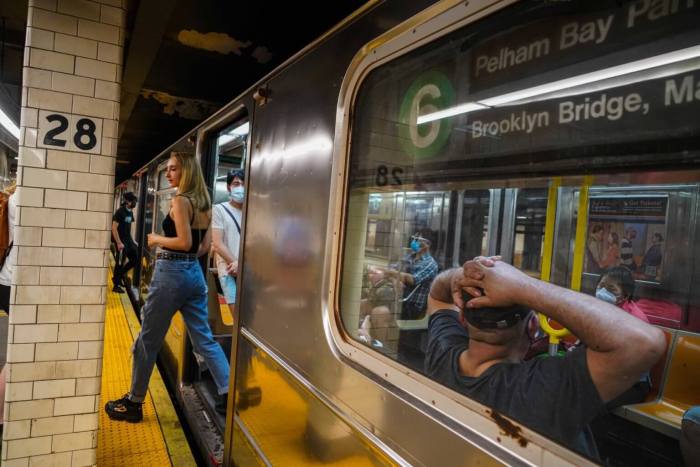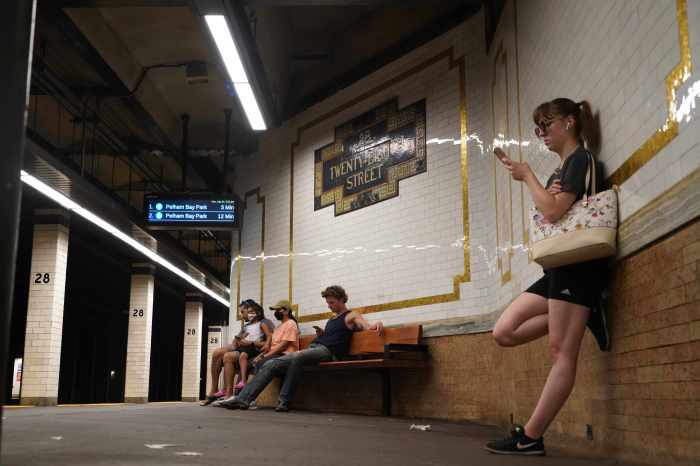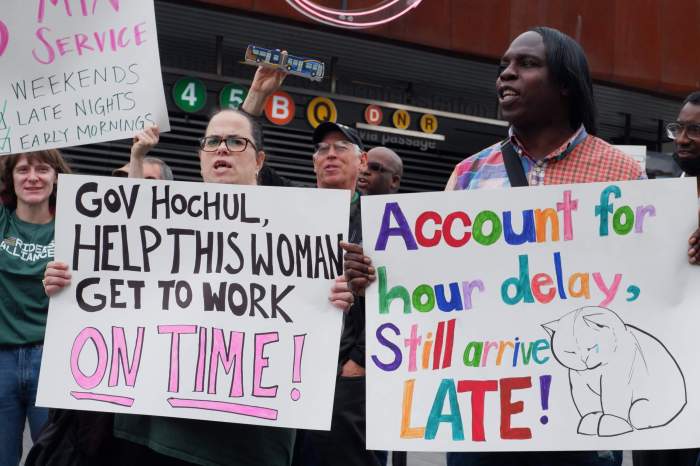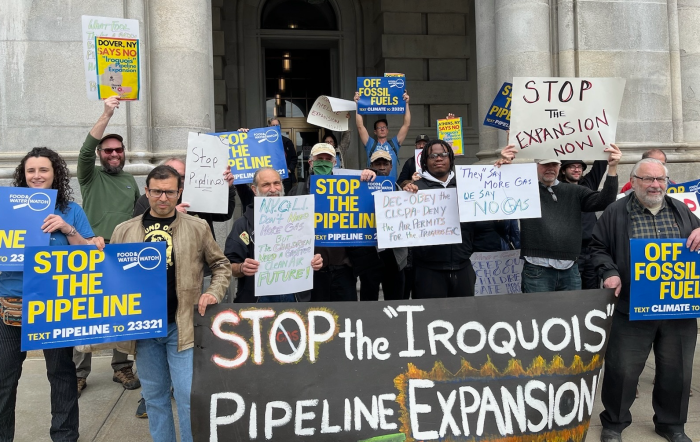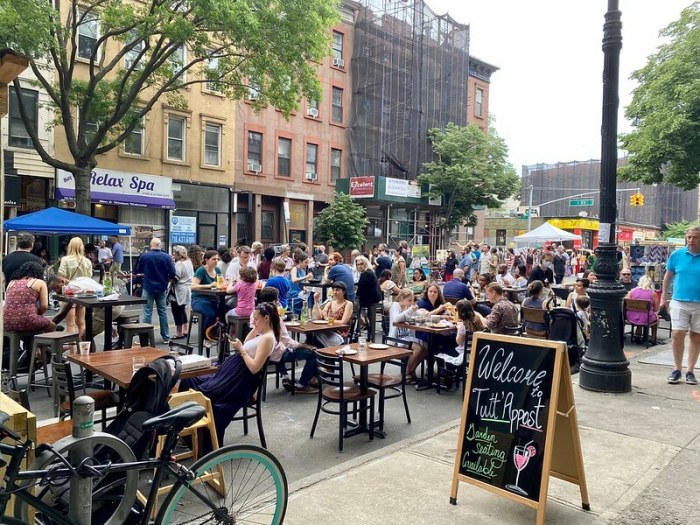The MTA needs billions of dollars to address problems such as climate change and its aging infrastructure over the next 20 years, before even thinking about expanding the system, the agency wrote in its “20-year needs assessment” released Wednesday.
The agency did not attach a specific dollar value to its capital needs over the next two decades, but the scale of funds needed to shore up the authority’s infrastructure would require massive amounts of public investment. The MTA manages physical assets it estimates to be worth $1.5 trillion, including stations, tracks, trains, buses, and support systems.
The roughly 160-page document outlines what the authority sees as its most pressing needs and greatest opportunities for system expansion, without regard to financial constraints. A tailored list of the authority’s project intentions, and the cost of them, will come out next year in the agency’s five-year capital plan.
Crumbling beneath your feet
Aging infrastructure is set to pose major challenges and require huge investments over the next 20 years.
One of the most glaring problems pertains to Metro-North’s rail line to Grand Central Terminal in Manhattan. The line along Park Avenue, including an above-ground bridge, a tunnel, and a massive “shed” where trains are sorted to 44 separate platforms, is more than 100 years old, and is starting to show its age.
The 110-year-old tunnel’s roof is starting to buckle under the weight of vehicles traveling on Park Avenue, and the support columns are rapidly deteriorating due to water infiltration. The 130-year-old Park Avenue Viaduct, which includes the Harlem-125th Street station, is a single inflection point for Metro-North’s three lines transporting passengers to Westchester County and Connecticut, but it carries many more trains per day than it was built for. Defects along the route spotted annually during inspections have tripled in the past 20 years.
Should any part of the viaduct, tunnel, or train shed fail over the next 20 years, the MTA would have to suspend all Metro-North service into Grand Central, massively disrupting commutes and requiring immediate, and astronomically expensive, reconstruction.
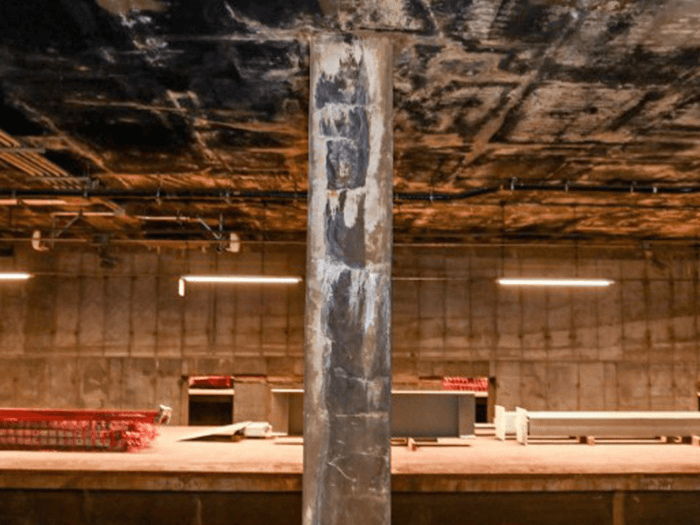
“More than 98% of Metro-North service could be disrupted or suspended if the Grand Central train shed, the tunnels leading to the Grand Central train shed, the Park Avenue Viaduct were to fail,” Jamie Torres-Springer, the head of MTA Construction & Development, told reporters on Tuesday. “And we’re seeing significant deterioration in those conditions. We’ve started work on that, but we have a lot more to do.”
Another area with potential for catastrophic failure is in the agency’s electrical substations providing power to the subway. Three-quarters of them are more than 50 years old and past their useful lifespan. “We’re in jeopardy of losing the ability to power the system,” said Torres-Springer.
Dealing with worse weather
But possibly the most pressing issue for the MTA to address is climate change. New Yorkers were reminded in stark terms of how vulnerable the city’s aging infrastructure is during last week’s flooding, when torrential downpours dropped record amounts of rainfall on the five boroughs. Among other things, the rain gushed underground into the subway system, forcing the MTA to fully suspend service on almost every line and run those they still could with severe delays.
Extreme weather like last week’s flooding will keep getting more and more common over the next 20 years as the effects of climate change manifest more noticeably. By the 2050s, the city will experience twice the amount of torrential rainfall and thrice the number of days above 90 degrees Fahrenheit.
The MTA says it has invested $7.6 billion in climate resiliency projects since Hurricane Sandy in 2012, a wake-up call that required lengthy and painful disruptions to service, like a year-long closure of R train service between Brooklyn and Manhattan to fix the line’s heavily-damaged underground tunnel, and the five-year long closure of the 1 train’s South Ferry stop to reconstruct the heavily-damaged terminal station.
Still, officials acknowledge the system is not yet ready as is for the scale of the challenge it faces from climate change.
“It’s only going to get harder to keep these storms from impacting the system as they intensify,” said Torres-Springer. “And we need investment to prevent frequent and long-term disruptions.”
Torres-Springer highlighted the plight of Metro-North’s Hudson Line, which runs from Grand Central to Poughkeepsie on tracks immediately adjacent to the Hudson River. Sea-level rise poses a particular challenge for this line, which is shared with Amtrak’s Empire Corridor; officials were forced to shutter the line for days when stormwaters inundated the waterside tracks, stone foundations washed away, and debris littered the right-of-way.
On the subway, the agency has spent years pursuing small fixes to “fortify” stations and prevent water from flowing in, like raising stairway landings at underground station entrances. But Torres-Springer acknowledged the increasing frequency and intensity of storms means that approach is “probably not the answer,” and instead endorsed “wet proofing,” whereby infrastructure is made resistant to flood surges.
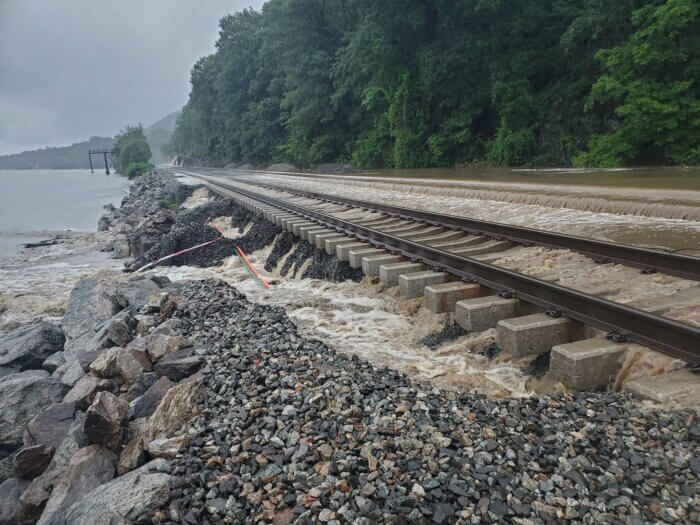
The MTA contends that investing in resiliency now will forestall having to clean up messes later. The agency will put out a “climate action plan” later this year that spells out its plans in more detail; this week, State Comptroller Tom DiNapoli concluded in an audit that the MTA is far behind where it should be on resiliency efforts.
A formula for expansion
Shoring up the existing system is not all that’s contained in the meaty document. It also looks at a number of potential expansion projects the agency could pursue in the next 20 years, and uses a complex statistical model to determine which investments might be a more prudent use of taxpayer money.
The formula, called the Regional Transit Forecasting Model, combines a whole host of factors like cost, expected ridership, impact on regional accessibility, the number of people who would switch from driving to transit, and equity, among others, to ascertain a project’s shovel-worthiness.
The MTA has already started planning for some initiatives with high-scores, like the Interborough Express (IBX) light rail between Brooklyn and Queens. Others proved unexpected winners, like extending the Second Avenue Subway west on 125th Street and connecting to other lines that service the Bronx. Extension of the Second Avenue Subway to 125th Street in the first place is still in the planning stages.
The MTA gave lower marks to ideas like extending the W train to Red Hook or building a 10th Avenue station on the 7, contending they would be expensive ordeals and not serve enough riders to be worth it.
The MTA gave middling marks to subway construction along Utica Avenue in Brooklyn, a long-dreamt expansion of the system, noting it would draw high numbers of riders but be extremely expensive; the agency gave higher marks to bus rapid transit along the corridor. Building a new north-south subway line in Queens on disused tracks would be too expensive and serve too few riders, officials argue.
Of course, anything the MTA wants or needs to do will require money. But the document does not delve much into how much everything will cost, which some watchdogs faulted. The Citizens Budget Commission praised the scope of the analysis but criticized the omission of cost estimates, contending it diminishes the document’s usefulness.
“Simply put, despite the substantial report and detailed appendices, New Yorkers still do not know if it will cost $20 billion, $70 billion, or some other amount over the next five years to start to bring the system to a state of good repair,” said CBC president Andrew Rein. “Omission of the costs and timelines needed to rebuild and improve the system makes it impossible to fully understand the magnitude of the MTA’s infrastructure challenges, the resources required to address them, and what has to be done when.”
Read the MTA’s 20-year needs assessment at future.mta.info
